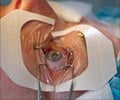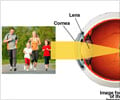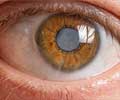Frequently Asked Questions
1. Which doctor should I consult for LASIK?You should consult an ophthalmologist (eye doctor)
2. When can I return to work after LASIK?
You can return to work after one or two days.
3. Can I undergo LASIK for both my eyes on the same day?
Yes usually both eyes are treated on the same day for convenience.
However, they can also be treated on separate days.
4. What are my options if my cornea is found to be too thin for LASIK?
You can go in for a surface ablation procedure like photorefractive keratectomy or EPI-LASIK.
5. Will I have perfect vision after the LASIK?
Most people have normal vision after the procedure, but this cannot be guaranteed, and many people have within one or two lines on the vision chart of the expected vision, especially when the initial refractive power of the eye is high.
The refraction after the procedure is usually within one dioptre of what is planned. A person cannot have better than the best corrected pre-procedure vision.
Retreatment can be done if there is insufficient correction the first time.
A presbyopic person whose myopia has been corrected will still need to wear glasses for reading, unless a presbyopic type of treatment has been performed.
6. If I am pregnant, how soon after delivery can I undergo LASIK?
You can undergo LASIK 3 months after delivery and discontinuation of nursing.
7. Will I require a second procedure after undergoing LASIK?
In some situations a second procedure may be required. For example:
- If the procedure was aborted the first time due to flap complications like decentration or button holing of flap
- In higher powers if the initial procedure is inadequate
- If there are flap related complications like displacement, or epithelial ingrowth
- In cases of diffuse lamellar keratitis (sands of Sahara syndrome)
8. If I require enhancement for under-correction, how soon will it be done?
Since healing times in LASIK are faster than in surface treatments like photorefractive keratectomy, the enhancement can be done within 3 months of the first procedure.












